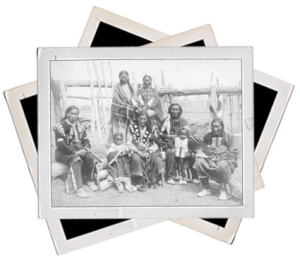The exploration of Arizona began in 1539 with the arrival of Marcos de Niza from Spain. De Niza was a friar who was looking for the Seven Cities of Gold. Other gold-seekers followed him, including Francisco Vásquez de Coronado. The search for these mythical cities led explorers to many native civilizations, including the Hopi and Zuni, the cliff-dwellers, sandstone villages, and the Apache and Navajo.
Settlement began much later than the time of the gold-seekers, and the majority of early settlement in the area was done by missionaries. Tubac was established with the building of a fort under Governor Diego Ortiz in 1753. In 1775 Tucson was founded, but the Spanish were eventually forced out of the area by marauding Apaches. However, Mexico had ownership of Tucson until the 1840s. The presidios at Tucson, Tubac, and Santa Cruz were occupied by Garrisons in 1826, but the settlements were not stable because the Apache still claimed the frontier.
While the area was a Spanish colony, the area extending south from the Gila River was part of the land of the Upper Pima, or the Primeria Alta. This included the northern region of Sonora in Mexico, which gained independence from Spain in 1821. This area was purchased by the United States in a deal called the Gadsden Purchase in 1853, adding to the area north of the river that was acquired after the Mexican War (1846–48). This was originally part of the New Mexico Territory, but in 1863, the Arizona Territory was separated.
The area was not heavily involved in the Civil War except for a few minor incidents. For about twenty years following the Civil War, animosity developed between the Apache and the mining, cattle ranching, and trading establishments that had moved in.
California’s gold rush increased the settlements in the Arizona Territory, concentrating along Cooke’s Wagon Route in the south along the Gila and Santa Cruz rivers. Advancements in transportation brought more migrations from the east. New railways were built between Albuquerque, New Mexico, and San Bernardino, California, included a stop at Flagstaff.
Many western films feature the frontier of Arizona, including cities like Tombstone and characters such as Cochise and Geronimo, the O.K. Corral, and the Earp brothers. These exciting tales provided an entertaining contrast to the more modern suburbs of Arizona. However, these stories have often been embellished by Hollywood.
Arizona did not see a significant population until the twentieth century. The struggle for statehood was long, but it was finally admitted to the Union in 1912. The long history of Native American and Mexican settlement in the area is still reflected in the ethnic composition of its population today. Native American populations have included the Navajo, Hopi, Havasupai, Yuma, Cocopah, Mohave, Apache, Pima, and Maricopa. Other residents are descendents of the frontiersmen, along with the more recent transplants of Americans seeking the warm, dry climate for health and retirement.
There have been recent efforts to preserve and microfilm early records from the Spanish and Mexican settlements, along with records developed during the territorial and statehood periods.
Arizona Ethnic Group Research

New Mexico records on Native Americans are often included in Arizona records. The reverse is also true. For example, the Santa Fe Agency records for 1890 to 1935 contain a lot of information on Arizona Native Americans. The same is true for the Leupp Training School records from 1915 to 1935. Records for both agencies are located in Denver at the NARA, along with the 1890 to 1960 records for the Albuquerque School. The National Archives in Washington, D.C. is home to records for Fort Worth and Pueblo Bonito from 1909 to 1926.
The NARA is not the only agency with extensive records on Arizona Native American tribe members. The FHL also has a large microfilmed collection of records from the National Archives Indian Agency and other agencies and collections should also be consulted for the best possible research results.
Arizona History Databases and other Helpful Links
The websites below will provide state-specific details to those in search of information for Arizona genealogy work.
- Arizona History
- History of Arizona
- Polk’s Arizona and New Mexico pictorial state gazetteer and business directory : 1912-1913.
- Who’s Who in Arizona.
- Portrait and biographical record of Arizona : commemorating the achievements of citizens who have contributed to the progress o
- Historic towns of the western states
State Genealogy Guides
[mapsvg id=”13028″]
